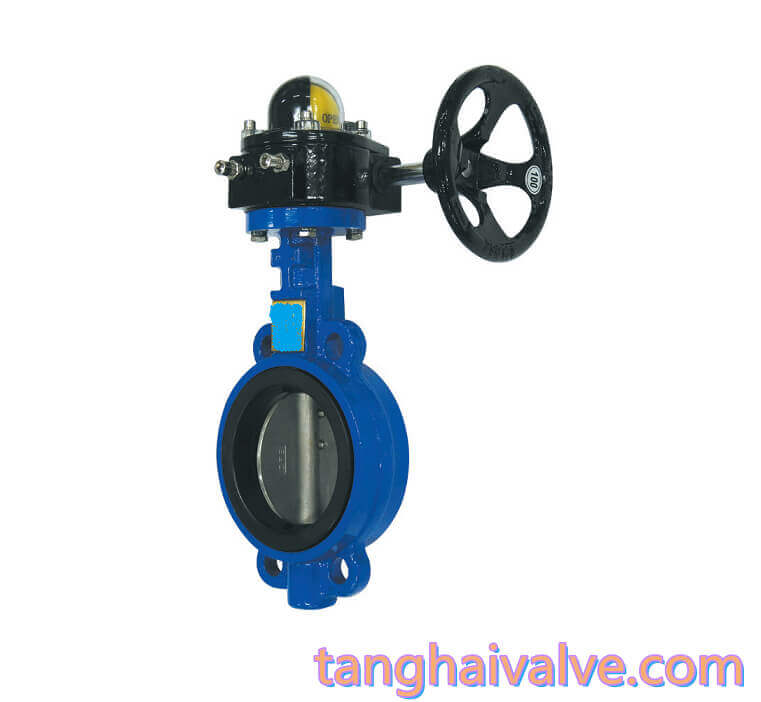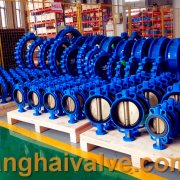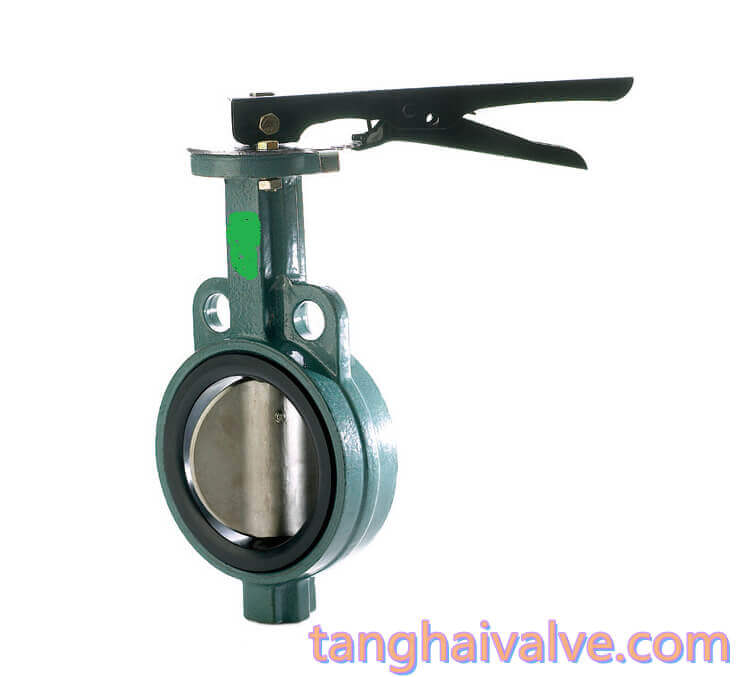Installation and operation method of manual butterfly valve
The most common driving methods for butterfly valves are manual, pneumatic, hydraulic and electric. This article mainly introduces the manual butterfly valve. Manual butterfly valve can be subdivided into handle butterfly valve and turbine butterfly valve. The two have no major impact on the installation of manual butterfly valves, and the difference lies more in the operation and use.

JIS 10K-wafer butterfly valve-backup seat (2)
Installation precautions for manual butterfly valve
1. Before installing the manual butterfly valve, it is necessary to first confirm whether the product is suitable for the working conditions of the medium in the pipeline. The interior of the butterfly valve must be clean, including the sealing ring, valve shaft, and butterfly plate. There must be no foreign matter. Do not close the butterfly plate before cleaning the butterfly valve to prevent damage to the sealing ring.
2. The wafer type manual butterfly valve needs to use the special flange for butterfly valve during installation.
3. It is best to install it vertically on the pipeline, not upside down.
4. When it is necessary to adjust the flow, it is recommended to use a turbine butterfly valve.
5. After installation, every part of the valve should be checked regularly during use, and faults should be eliminated in time.
How to operate a manual butterfly valve
From the above, we know that manual butterfly valves are divided into handle butterfly valves and turbo butterfly valves, and their operation methods will of course be different. The operation of the handle butterfly valve is to pull the handle, turn it counterclockwise to open the valve, and turn it clockwise to close the valve. The turbine butterfly valve is to install a worm gear reducer on the valve stem of the butterfly valve. The turbine device makes the operation of the butterfly valve more labor-saving, copes with a larger medium pressure environment, and also improves the operability of the valve.
If the diameter of the butterfly valve is less than 150mm, it is recommended to use the handle to drive it. If the diameter of the butterfly valve exceeds 150mm, it is recommended to use the turbine device, which is more labor-saving to operate. The maximum diameter of the handle butterfly valve can only be 250mm. If it exceeds this maximum diameter, it is no longer applicable and needs to be equipped with an electric or pneumatic actuator.
In industrial engineering, we recommend the use of turbo butterfly valves, because in addition to saving labor, turbo butterfly valves have better sealing performance than handle butterfly valves. Another point is that in the pipeline with high switching frequency, the service life of the turbine butterfly valve is higher than that of the handle butterfly valve.
TH Valve is a professional manufacturer of butterfly valve, gate valve, check valve, globe valve, knife gate valve, ball valve with API, JIS, DIN standard, used in Oil, Gas, Marine industry, Water supply and drainage, fire fighting, shipbuilding, water treatment and other systems, with Nominal Diameter of DN50 to DN1200, NBR/EPDM/VITON, Certificates & Approvals: DNV-GL, Lloyds, DNV, BV, API, ABS, CCS. Standards: EN 593, API609, API6D
Related news/knowledge:
electric hard seal butterfly valve vs electric soft seal butterfly valve
Vulcanized vs soft seated/back-up butterfly valve
Ventilation butterfly valve installation instructions
The correct operation method of manual valve

 tanghaivalve.com
tanghaivalve.com

 © Copyright 2020 Tianjin Tanghaidongyang Valve Co., Ltd. All Rights Reserved.
© Copyright 2020 Tianjin Tanghaidongyang Valve Co., Ltd. All Rights Reserved. tanghaivalve.com
tanghaivalve.com